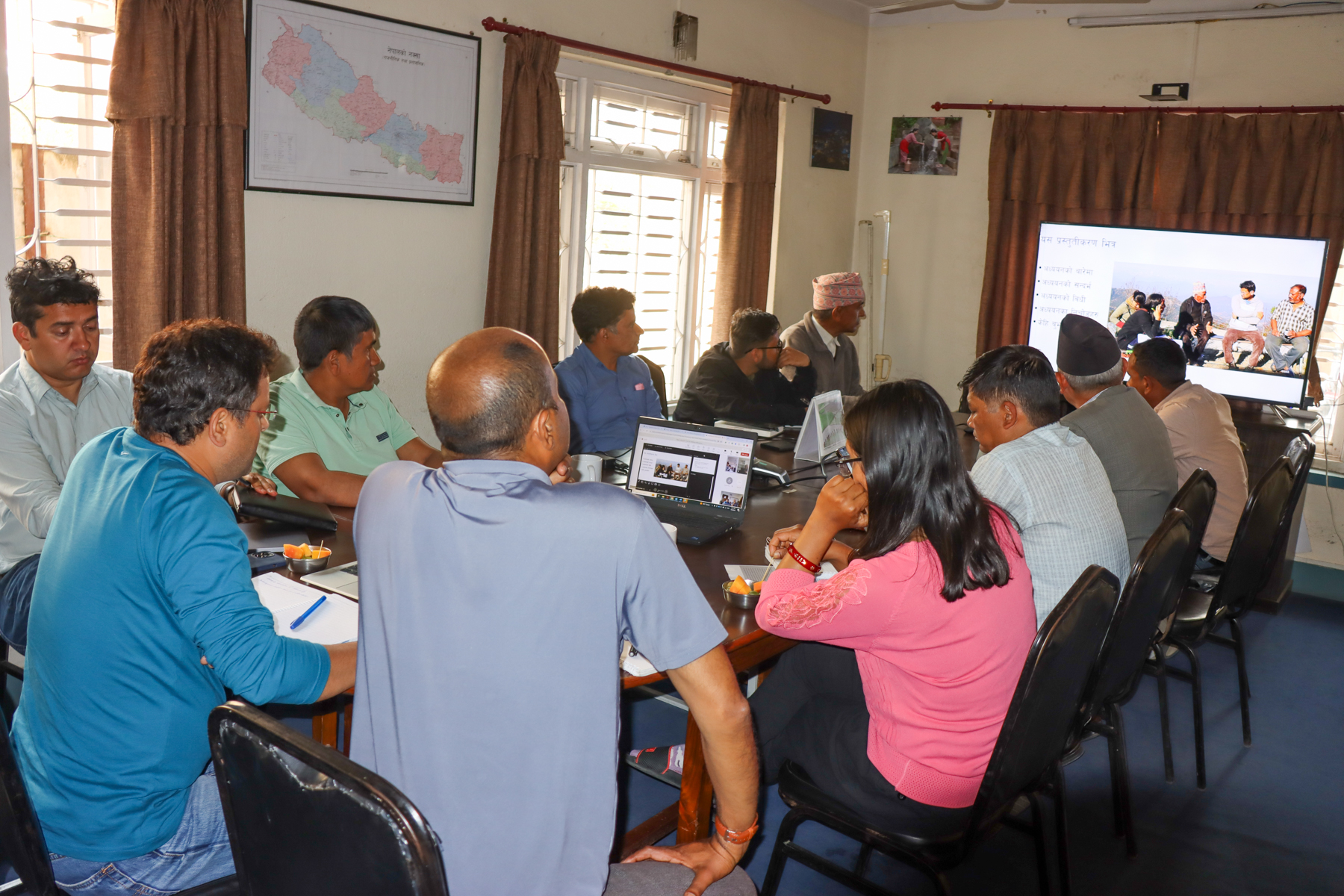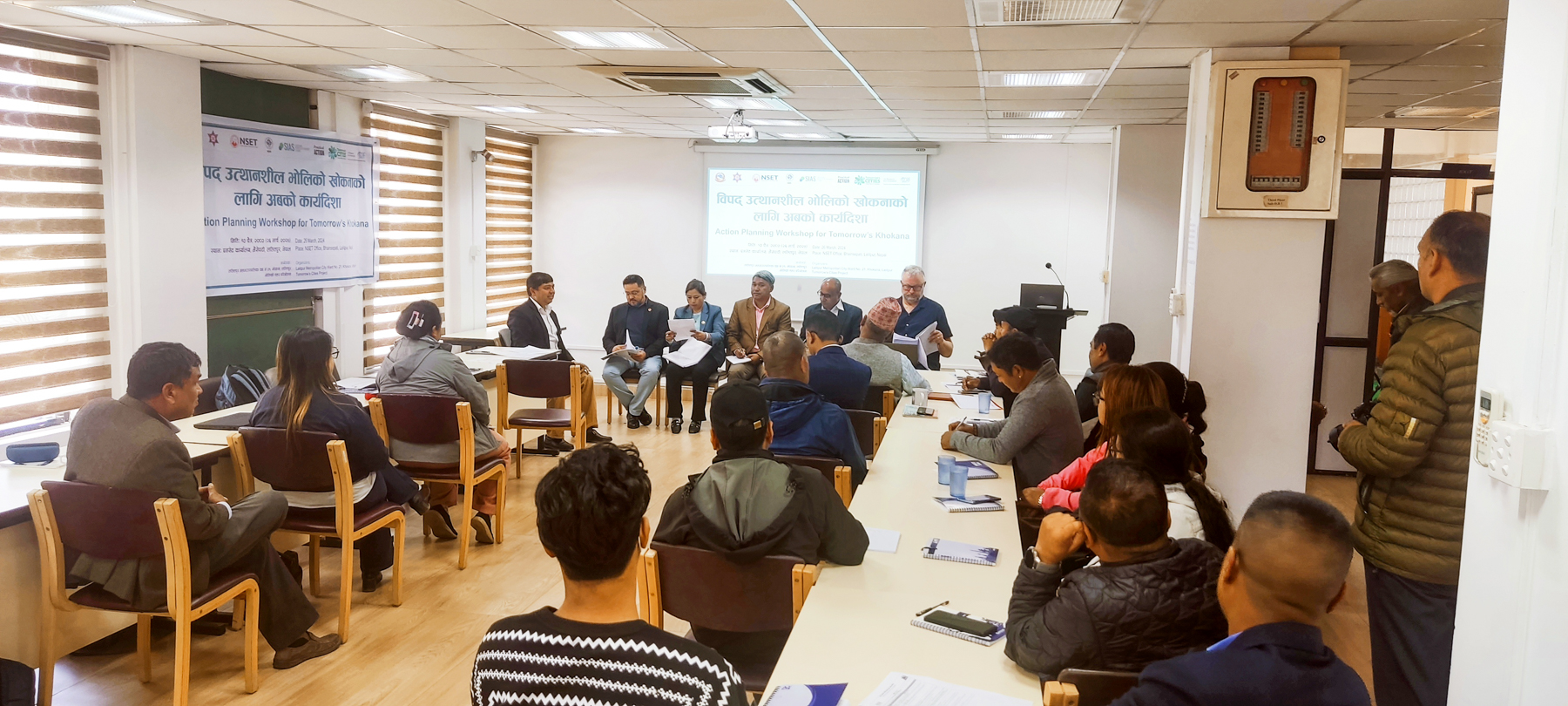On 1 April 2022, Southasia Institute of Advanced Studies (SIAS) conducted a local level inception workshop in Dolakha. The workshop was organized as part of the “Co-producing a shock-resilient business ecosystem for women-led enterprises in Nepal” project funded by the International Development Research Centre (IDRC) and led by SIAS in collaboration with Aria Solutions, NIMS College and Himalayan Bio-Trade Pvt. Ltd. (HBTL). Dolakha is one of the three study sites of the project where the action research project focuses on wintergreen production and enhancing the role of women in its value chain.
We conducted the local level inception workshop on the 1st of April 2022 in Charikot, Dolakha. 16 participants from local women collectors, processor and local government representatives to institutional representatives attended the two-hour-long workshop. Ms. Supriya Lama from SIAS welcomed the guests and summarized the workshop’s objectives. The workshop primarily intended to familiarise the participants about the project’s essence and its interventions in Dolakha. Mr. Loknath Pathak from HBTL hosted the event.
The first part of the workshop consisted of presentations by the project team and the second part comprised of group work and presentations by the participants. Mr. Sushant Acharya from SIAS gave an introductory presentation on the project. The project broadly aims to create a supportive entrepreneurial ecosystem for women in Nepal, especially in regard to external shocks such as COVID-19 and the climate crisis. He acknowledged the multiple work burdens upon women and the worsening situation due to the pandemic. Further, women are challenged by socio-cultural barriers and financial restrictions that limit their involvement in higher nodes of the value chain. In Dolakha, the project intends to enhance wintergreen production, sensitize locals regarding its conservation and activate women’s role in resource utilization and decision making.
Mr. Khilendra Gurung from HBTL was next in line to present the specific activities to be conducted in Dolakha to attain the project’s objectives. Before moving on to the second phase of the program, we had Mr. Thir Bahadur Karki from Division Forest Office give his brief remarks. He acknowledged the initiation and appreciated its objective to improve wintergreen’s value chain in the district.
The second phase of the workshop featured the division of the participants into three groups wherein they were presented with two questions for discussion and presentation. The first group was the local women collectors who were assigned with questions about challenges in wintergreen collection and solutions to overcome them. They presented issues in the collection such as multiple burdens of household chores, declining availability of wintergreens and untimely payment for collections. They proposed solutions such as a weekly payment system, plantations of new wintergreen saplings and constant grooming to increase the plant’s availability.
The second group was the processor group which was presented with questions about challenges and opportunities in wintergreen collection. The group representative presented opportunities such as natural state of wintergreens, easy availability of human resources for collection and distillation, integration of wintergreen collection in the activity plan of community forests, and economic support to community forest as royalty and source of financial savings for women collectors. They presented some challenges such as declining availability of wintergreen, lack of support for conservation, lack of support and research to make the distillation process efficient and a double tax burden.
The third group was the community forest group who were posed with questions regarding reasons for the declining state of wintergreens in community forests and solutions to increase its availability. They put forward the following reasons for the decline: use of wintergreen leaves for other activities such as feeding animals, haphazard collection and competition among enterprises/ distillers for high oil production, animal grazing in patches where wintergreen is available, climate change and lack of open spaces. They suggested measures such as the establishment of a wintergreen nursery, controlling animal grazing in areas that have wintergreen, wintergreen plantations in open spaces, timely bush clearing and training to collectors regarding the right cutting technique.
The group work and presentation marked the end of the second phase of the program. After the highly insightful presentations by the representatives of respective groups, Dr. Dil Khatri, Executive Director, SIAS gave his concluding remarks. He emphasised the role of community forests in the conservation of wintergreens and urged the relevant stakeholders to decrease their dependency on conducting minor activities such as bush clearing and cleaning. He reiterated that the role of community forests must emerge as prominent and they have to take an active role in the conservation of wintergreens.




